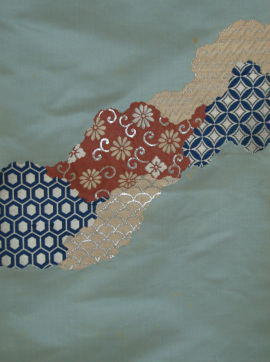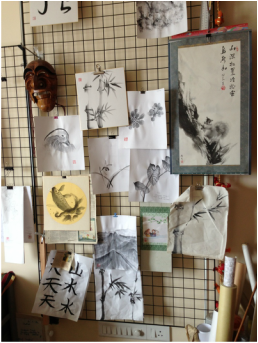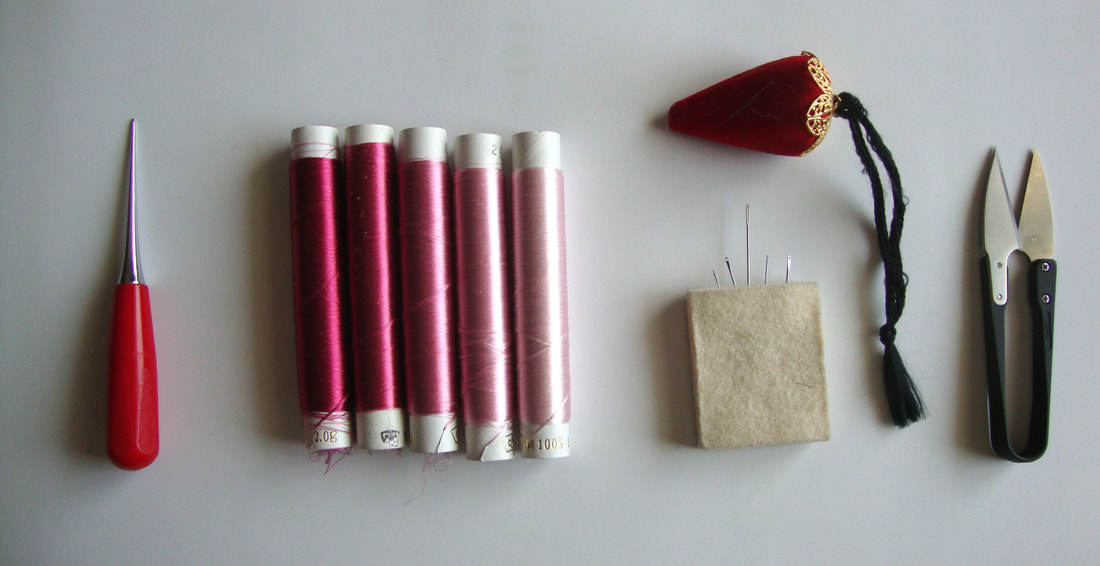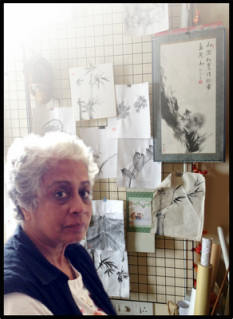 The fabrics that inspire me
The fabrics that inspire me
A little about me
During the last 8 odd years of my total 14-year stay in Japan, when I chose to study ‘Nihon Shishu’ and ‘Suibokuga’, all I thought about was a way I could continue my relationship with the country even after we (my husband and I ) left it for good. A country that has almost been our second home. And I thought I would find it through the demanding classical arts I chose to pursue. I have not been disappointed .
These two arts also changed my life in ways I could not even imagine---allowing me to acknowledge the qualities within myself that would help me stay on course, in spite of all the frustrations, redefining my relationship with nature, introducing me to painting and needle-and-thread work, and exposing me to an aesthetic I was only vaguely aware of, till then. A total cultural experience. Words like ‘dedication’, ‘sincerity’, ’concentration’, ’pursuit of perfection’ all came into focus, as I realized that, as with all classical arts, ‘Nihon Shishu’ and ‘Suiboku-ga / Sumi-e’ represented a way of life if one were to seriously engage with them.
During the last 8 odd years of my total 14-year stay in Japan, when I chose to study ‘Nihon Shishu’ and ‘Suibokuga’, all I thought about was a way I could continue my relationship with the country even after we (my husband and I ) left it for good. A country that has almost been our second home. And I thought I would find it through the demanding classical arts I chose to pursue. I have not been disappointed .
These two arts also changed my life in ways I could not even imagine---allowing me to acknowledge the qualities within myself that would help me stay on course, in spite of all the frustrations, redefining my relationship with nature, introducing me to painting and needle-and-thread work, and exposing me to an aesthetic I was only vaguely aware of, till then. A total cultural experience. Words like ‘dedication’, ‘sincerity’, ’concentration’, ’pursuit of perfection’ all came into focus, as I realized that, as with all classical arts, ‘Nihon Shishu’ and ‘Suiboku-ga / Sumi-e’ represented a way of life if one were to seriously engage with them.

I have been designing (since our return to Bangalore, India in 2008), my own ‘Nihon Shishu’ pieces—and realize that the art is the ideal vehicle for my artistic desire to have my love of painting, embroidery and nature come together as one.
In ‘Suibokuga’ I have found the perfect counterpoint to the intricate, detail-oriented focus of ‘Nihon Shishu’.
The paintings now only take me a few minutes (in most cases) and a limited number of attempts, so I have finally begun to enjoy my own work!! To understand the full implication of this, I wish only to quote this from the Wikipedia---“Once a stroke is painted, it cannot be changed or erased. This makes ink and wash painting a technically demanding art-form requiring great skill, concentration and years of training”
Because of their exacting nature, few people anywhere choose to pursue these arts for the long term. This is particularly true of ‘Nihon shishu’ which has few practitioners even in Japan and about which, unlike the more popular arts like Ikebana, very little is known outside Japan.
|
|
I’m convinced that arts such as the ones I’ve had the good fortune to study should not be a closed secret. They represent the best of human thought, skill, endeavour and culture and I wish to contribute whatever I can, to make sure they remain visible and relevant in today’s world.
This is why I want to reach out to individuals who are drawn to these arts—be they individuals who want something exclusive for themselves or their loved ones or designers with clients who are discriminating and interested in exclusive art in their homes. |
Sujata Srinivasan



